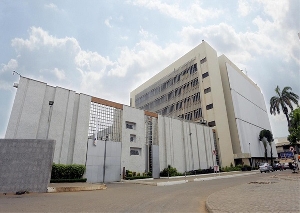The Treasury faces a potential hurdle in deficit financing as commercial banks, which hold over 35 percent of outstanding Treasury bills, are expected to gradually liquidate their holdings to fund credit creation, according to a note from GCB Capital.
The shift comes in the wake of the Bank of Ghana’s implementation of a tiered Cash Reserve Ratio (CRR) system, aimed at incentivising banks to increase lending activity and unlock capital for economic growth.
“The Ministry of Finance will have to re-think deficit financing, and yield compression could buck the trend as banks focus on new ways to deploy deposits,” GCB Capital stated in a note to investors.
Previously, banks had favoured low-risk investments like Treasury bills due to a risk-averse environment and declining asset quality, resulting in sluggish credit growth despite strong deposit levels.
The policy shift, which took effect this week, could lead to approximately GH¢16.2billion – US$1.2billion – flowing from banks to the BoG, tightening cedi liquidity and potentially causing the cedi to appreciate in the short term.
Last week’s Treasury bill auction saw a 43 percent under-subscription, the first in 17 consecutive weeks, marking a departure from the strong investor demand that had characterised the market throughout Q1 2024.
“While all banks hold healthy cash balances on their books, we believe these are largely optimal cash balances required for smooth operations,” GCB Capital added.
The under-subscription is attributed to the new CRR policy, as banks prioritise shoring up their liquidity over investing in treasury bills to comply with the new CRR levels.
“The pronounced under-subscription at the last T-bill auction could persist beyond the current week, with the pace of yield compression potentially softening or may even buck the trend through Q2 2024, all things equal,” cautioned GCB Capital.
In March 2024, the total value of Treasury bills successfully raised by the Treasury was GH¢19.9billion, 17 percent lower than the previous month. These funds were used for budgetary support and the refinancing of maturing bills, with a total face value of approximately GH¢14.47billion.
While yields on Treasury bills continued their downward trend in March 2024, the pace slowed. The 91-day, 182-day and 364-day bills closed at 26 percent (down 128bps), 28.5 percent (down 125bps), and 29.1 percent (down 120bps), respectively.
The Treasury bill auction under-subscription indicates a potential challenge in the short-term, but the continued decline in yields suggests a cautious optimism in the market.
As banks shift their focus to credit creation, the Treasury faces the challenge of re-thinking its deficit financing strategy and navigating the potential impact on yield compression efforts.
Business News of Friday, 5 April 2024
Source: thebftonline.com













